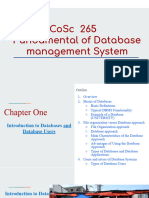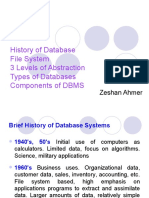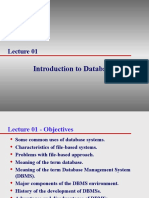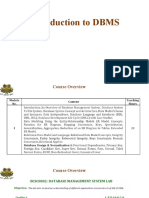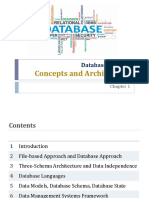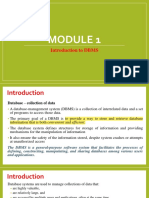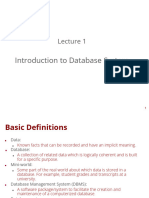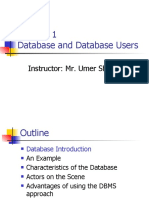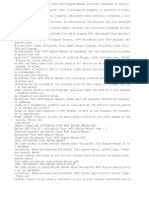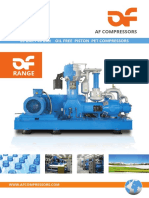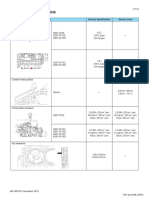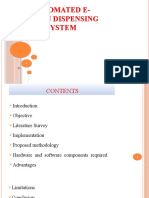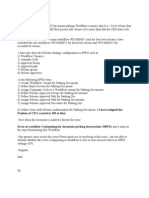0% found this document useful (0 votes)
9 views30 pagesChapter 1-Introduction To Database-1
The document provides an introduction to database systems, outlining recommended books, module topics, and the drawbacks of file-based approaches to data management. It emphasizes the advantages of using a Database Management System (DBMS), including data redundancy control, efficient query processing, and integrity enforcement. Additionally, it describes the components of a DBMS environment, including hardware, software, data, procedures, and users.
Uploaded by
shamirtashCopyright
© © All Rights Reserved
We take content rights seriously. If you suspect this is your content, claim it here.
Available Formats
Download as PPTX, PDF, TXT or read online on Scribd
0% found this document useful (0 votes)
9 views30 pagesChapter 1-Introduction To Database-1
The document provides an introduction to database systems, outlining recommended books, module topics, and the drawbacks of file-based approaches to data management. It emphasizes the advantages of using a Database Management System (DBMS), including data redundancy control, efficient query processing, and integrity enforcement. Additionally, it describes the components of a DBMS environment, including hardware, software, data, procedures, and users.
Uploaded by
shamirtashCopyright
© © All Rights Reserved
We take content rights seriously. If you suspect this is your content, claim it here.
Available Formats
Download as PPTX, PDF, TXT or read online on Scribd
/ 30

